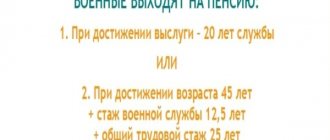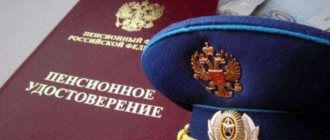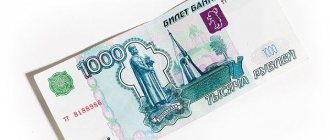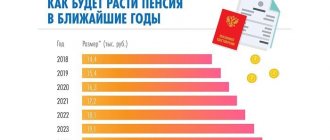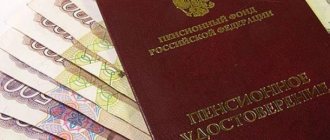Indexation in 2020
The annual indexation of pensions in 2020 takes place in several stages:
- From January 1, the old-age insurance pension for non-working pensioners increased. This year, a new approach to determining the interest by which the monthly payment is increased has been introduced.
- In February, monthly cash payments increased for a number of beneficiaries. These are veterans, Heroes of the USSR, Russia, full holders of the Order of Glory, disabled people, former minor prisoners of fascism, Heroes of Socialist Labor and Heroes of Labor of the Russian Federation.
- In April, the social pension to which disabled people are entitled, including disabled children, men and women over 70 and 65 years old, and people who have lost their breadwinner, is increasing.
- The recalculation of the old-age insurance pension for working pensioners is expected in August.
Each of the listed government support measures is subject to annual increase. If a citizen receives less than the subsistence minimum, the social security department must establish a special surcharge for the difference.
How pension indexation will be carried out in 2021
In accordance with amendments that were recently made to the country's basic law, pensions must be subject to indexation every year. It is worth noting that this norm has been working this way for many years, without any amendments, it’s just now enshrined at the legislative level. Despite this, mandatory recalculation has not yet been included in federal law, so the indexation procedure remains the same.
Last year, along with the increase in the retirement age, old-age insurance payments to non-working pensioners were also increased - the increase was recorded at 7.05%. This year the increase was 6.6%, but in 2021 it will be 6.3%.
Recipients of insurance pensions will simply receive an increase of 6.3%, but some pensioners receive payments that are less than the subsistence level. In this case, they are entitled to a social supplement, which will increase the overall level of payment to the subsistence level.
For this part of pensioners there is a formula:
- the calculated pension is increased by the percentage of established indexation;
- if the amount received is again less than the minimum monthly wage, a social supplement will be added to the payment first, and then the indexation amount.
Indexation of insurance pension by year
From January 1, 2020, the old-age insurance pension was finally decoupled from the rate of inflation. The growth now does not depend on price dynamics in the past year, but corresponds to a specific value - 6.6% of the current size. The equivalent of one pension coefficient is 93 rubles.
The table of indexation of pensions by year is given below: The guideline for future periods is reflected in the Main characteristics of the budget of the Pension Fund of Russia for 2020-2022 (approved by the Ministry of Finance of Russia):
- in 2021, an increase of 6.3% is expected - a pension point is expected to cost 98 rubles;
- 2022 will bring a further increase of 5.9% - the pension point will be equal to 104 rubles.
The figures are approximate and will most likely be subject to slight revisions. In any case, the indexation of insurance pensions should exceed the rate of price growth. This is evidenced by official inflation data - according to Rosstat, it amounted to 3% last year.
You can find more complete information on the topic in ConsultantPlus. Full and free access to the system for 2 days.
Important! The Ministry of Economic Development forecasts price growth in 2020 at 3%, the Central Bank expects inflation in 2020 to range from 3.5 to 4%.
How and when it is carried out
The following types of pension provision are subject to periodic indexation:
- by old age;
- on disability;
- for loss of a breadwinner;
- indexation of military pensions;
- social pension.
Read about how the old-age pension is calculated here.
Indexation of pensions should to some extent compensate pensioners for the systematic increase in prices for goods and services. For each category of citizens entitled to a certain pension provision, there are its own rules determining the amount of payments.
Working pensioners
For some categories of citizens, indexation may be suspended. This decision is made at the level of the Government of the Russian Federation. So, for example, from January 1, 2020, it was decided to suspend the indexation of pensions for all working pensioners. This is determined, first of all, by the deficit of funds in the State budget. It is believed that a working pensioner can easily compensate for price increases using his earnings.
The funds released as a result of the suspension of indexation will be used to increase pensions and social benefits for the most vulnerable categories of citizens. According to the latest data, there are no plans to reverse the decision to remove indexation in the near future. Moreover, against the backdrop of the economic crisis, it is possible that the increase in pensions for working pensioners will be completely stopped.
If a pensioner stops working, his pension will be indexed to the percentage of inflation in the next month.
Non-working pensioners
To reduce the financial burden on the budget, pensions for non-working pensioners are indexed at different times. These are February 1st and April 1st. Moreover, in February all types of pensions increase, except social ones. In April, those who are entitled to a social pension receive additional payments.
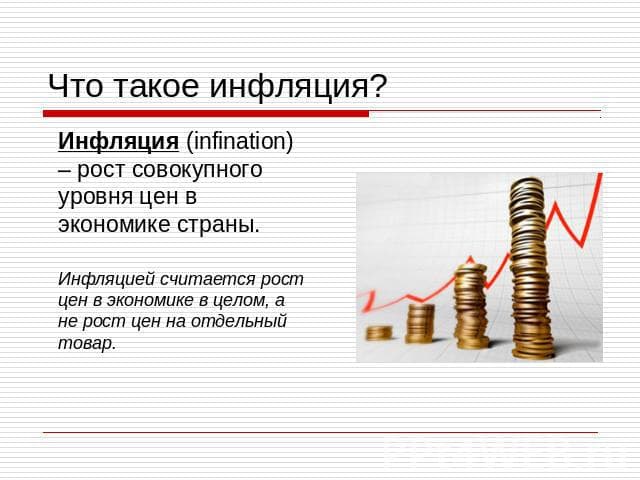
Insurance pensions can also be increased again from April 1, but the decision on this is made at the Government level. It may also be decided to introduce a one-time cash payment instead of indexation, which took place in 2020. In 2017, the pension will be increased not from February, but from January 1. Pension payments increase automatically, so pensioners do not need to go anywhere or write any applications. The annual increase in pensions stimulates an increase in the purchasing power of citizens, which is reduced due to unjustified price increases.
Pension calculation in 2020
The fixed payment to the insurance pension in 2020 is 5,686 rubles. 25 kopecks, and the average annual amount of payments to non-working pensioners increased to 16,500 rubles. The final amount depends on the amount the citizen received in 2020.
To find out how much the pension increased in 2020, you need to multiply the amount of payments received in 2020 by 0.066. For example, if the pension in 2020 was 11,415 rubles, then after indexation in 2020 the increase will be 753.4 rubles. (11,415 × 0.066), and the total amount will be 12,168.4 rubles. (11,415 + 753.4).
Table with examples of calculating amounts after indexation:
Subscribe to our newsletter
Yandex.Zen VKontakte Telegram
Recalculation of old-age pensions for working pensioners is carried out in August, depending on the amount of insurance contributions transferred for the employee to the budget by the employer in 2020.
Indexation of pensions after 2010
In 2010, the separation of the basic and insurance parts of pensions was eliminated - they were combined into the insurance part.
Since 2010, the size of the insurance part of the labor pension has been indexed 12 times (including an increase from January 1, 2020). This usually occurs from February 1st and April 1st. In 2012-2014 and 2017, the amount of the insurance pension was adjusted twice. In 2010, 2011, 2020, 2020 - once. The largest one-time indexation was carried out on February 1, 2020 - by 11.4%. Pensions will increase the least from January 1, 2020 - by 3.7%. In 2020, when indexing on February 1, the government for the first time decided not to index the pensions of working pensioners. This is due to the growing deficit of the pension fund. It was decided to replace the second indexation in 2020 with a one-time payment of 5 thousand rubles.
In 2020, pensions were increased twice. On January 19, 2020, a decree of the Russian government was signed on the indexation of the fixed payment to the insurance pension. According to the document, from February 1 it was indexed by 5.4% - that is, to the inflation rate in 2016. The increase in pensions affected only non-working pensioners. The resolution to increase social pensions (by 1.5%) was signed on March 16. From April 1, insurance pensions increased by 0.38% (within the framework of the law, without a special resolution), and the increase was made for both non-working and working pensioners.
According to Rosstat, the average nominal size of assigned pensions in 2010-2017 increased 2.15 times in ruble equivalent: from 6 thousand 177.4 rubles. ($203) up to 13 thousand 336 rubles. ($232).
Indexation of social pension
In April 2020, the annual indexation of social pensions is carried out. The growth rate is determined by the increase in the cost of living of pensioners for 2020. The calculation principle has not changed in 2020.
Table of increases in social pensions by year: For future periods, the figures are as follows:
- growth is expected to be 2.6% in 2021;
- the increase in social pension in 2022 is planned by 3.1%.
The given figures are planned and, most likely, will be adjusted to take into account changes in the cost of living in 2020.
Who didn't get promoted?
Indexation was carried out for all non-working pensioners, but some did not feel the long-awaited increase.
For example, a pensioner turned to the OPFR in the Lipetsk region for clarification, whose pension increased by only 20 rubles, which is 0.23% of the previous amount, while the woman expected an increase of 3.7%. What is it, why is there so little?
“Last year I received a pension of 8,600 rubles. Since January, everyone’s pension has been increased by 3.7%, but for me it was only by 20 rubles and it turned out to be 8,620 rubles. Explain how much my pension was indexed?” asks the pensioner.
The Pension Fund of the Russian Federation explained to the discouraged pensioner that the 8,600 rubles she received last year is the amount of her pension, taking into account the FSD (federal social supplement) up to the subsistence level established in the region.
During indexation, only the size of the pension increases, and if after this the citizen’s pension does not reach the subsistence level established in the region, he is also assigned a social supplement.

